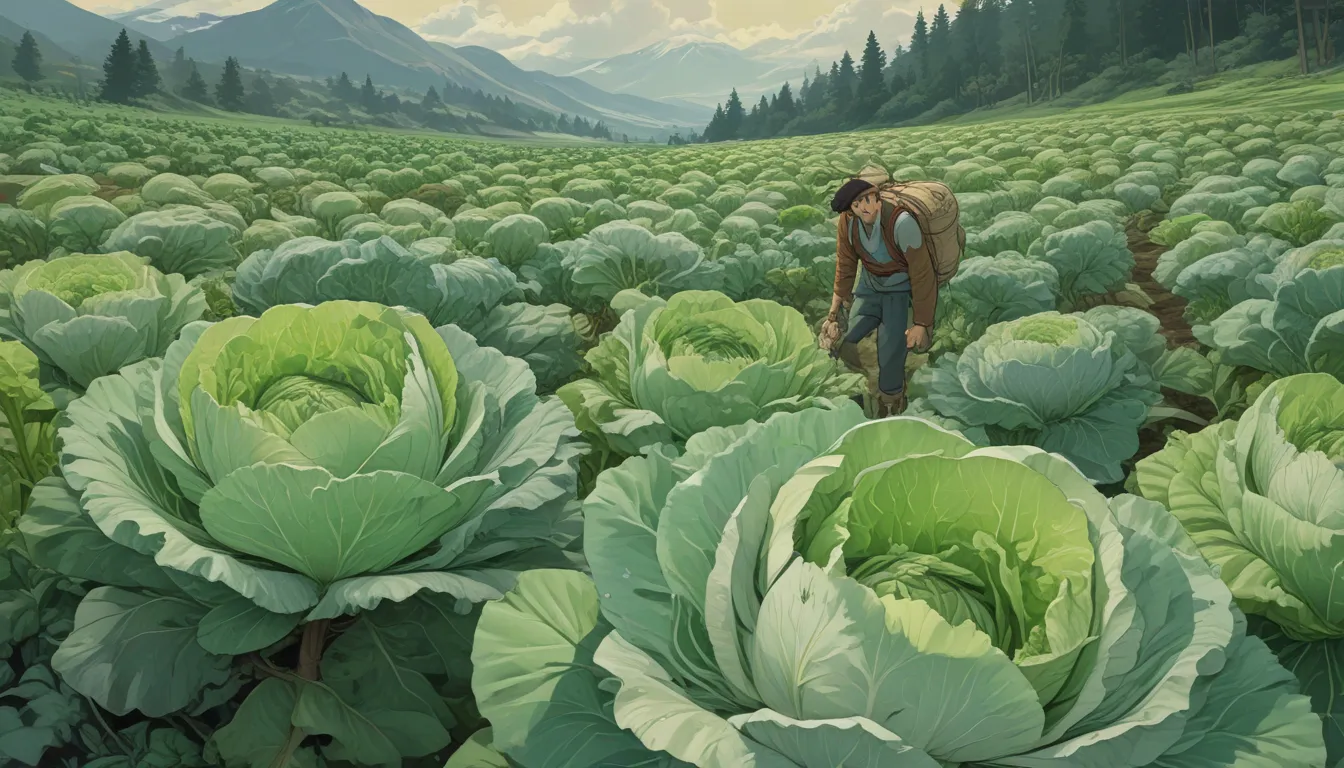Growing Winter Cabbage for a Bountiful Late-Season Harvest

Are you looking to enjoy fresh vegetables from your garden during the winter months? If so, planting late-season cabbage could be the perfect solution for you. This versatile Brassica is known for its ability to withstand light frost, with some varieties even tolerating temperatures as low as 20ºF.
While green and red cabbage varieties are typically more cold-hardy, napa cabbage cultivars may struggle in below-freezing temperatures. However, with the right knowledge and care, you can successfully grow winter cabbage in your garden and enjoy a harvest that lasts from November through February or March.
In this comprehensive guide, we will delve into the world of growing winter cabbage, covering everything from selecting the right cultivars to harvesting and storing your crop. So, if you’re ready to embark on a journey of winter gardening, keep reading to discover the secrets to cultivating this crisp and nutritious vegetable.
What You’ll Learn
Are you curious about how to grow winter cabbage successfully? In this guide, you will learn about:
- Understanding Winter Cabbage
- When and How to Plant
- Cultivar Recommendations
- Protecting Your Plants from Cold
- Harvesting Tips
- Storage Techniques
Let’s dive into the details and explore the wonderful world of winter cabbage.
Understanding Winter Cabbage
When it comes to growing cabbage for a winter harvest, choosing a late-season cultivar is key. These varieties, also known as “storage types” or “overwintering cabbage,” boast superior cold tolerance compared to their counterparts, allowing you to enjoy a continuous harvest well into the winter months.
Often preferred for making fermented foods like sauerkraut, these late-season varieties produce large heads that can be stored for extended periods, making them a valuable addition to your winter pantry.
While cold temperatures are a concern for winter cabbage, it’s worth noting that the main challenge lies in the decrease in daylight during fall and winter. As the days grow shorter, plant growth slows down, emphasizing the importance of planting early to allow your cabbage to mature before the onset of winter.
When and How to Plant
To ensure a successful fall and winter harvest, it’s essential to understand the concept of the “Persephone Period,” as explained by organic farmer Elliot Coleman. This period marks the time when daylight hours drop below ten, signaling the approaching winter season.
By calculating 12-14 weeks before the Persephone Period in your region, you can determine the ideal time to sow your cabbage seeds. Transplant seedlings 9-12 weeks before this date, giving your plants ample time to grow before daylight becomes scarce.
When sowing seeds, prepare the soil by raking and amending it with compost if needed. Plant the seeds at a depth of 1/2 inch, spacing them 11-18 inches apart. For transplanted seedlings, aim for a spacing of 12-18 inches between plants.
While winter cabbage requires less water than its spring counterparts, it shares similar growing requirements. Consider planting in containers if space is limited, ensuring a container size of at least 1 foot in diameter and depth.
Cultivar Recommendations
Selecting the right cultivar is crucial for a successful winter cabbage harvest. Look for varieties labeled as “winter,” “cold season,” “overwintering,” or “storage” for optimal results. Here are some recommended cultivars to consider:
- Brunswick: This heirloom variety produces large drum heads in 85-90 days, offering cold hardiness and drought tolerance.
- Late Flat Dutch: Maturing in 105 days, this variety features sweet and flavorful leaves, making it a popular choice for winter gardening.
- Tundra F1: A hybrid cross between white cabbage and savoy, Tundra F1 boasts tight heads with dark green leaves, ideal for frosty conditions.
- Protovoy AGM: Another award-winning variety, Protovoy is a compact winter savoy cabbage with small heads and dark green outer leaves.
Protecting Your Plants from Cold
While most cabbage varieties can withstand light frosts, temperatures below 20ºF can pose a threat to your plants. To protect them from extreme cold, consider the following measures:
- Use floating row covers to shield plants from frost and slightly increase temperatures.
- Opt for heavyweight covers for maximum frost protection, ensuring sides are weighed down to prevent wind damage.
- Explore options like cold frames and low tunnels to provide additional insulation against the cold.
- If growing cabbage in containers, bring them indoors during severe cold spells to protect them from freezing temperatures.
Harvesting Tips
Knowing when to harvest your cabbage is crucial for maximizing flavor and texture. Heads should be full and firm before harvesting, and don’t worry if your cabbages show signs of frost damage. You can simply peel back damaged leaves to reveal the healthy ones underneath.
Interestingly, light frosts can actually enhance the sweetness of winter cabbage, adding a delightful flavor profile to your dishes.
Storage Techniques
One of the advantages of cabbage is its excellent storage capabilities. After harvesting, heads can be stored for up to three months in a root cellar or one month in the refrigerator. To extend their freshness, store cabbages in a plastic bag on a shelf, leaving the outer leaves intact until it’s time to prepare them.
If you encounter rotten leaves during storage, simply remove them to unveil the healthy part of the head beneath, ensuring that your cabbages stay fresh and flavorful.
A Crisp Winter Treat
Now that you’ve mastered the art of growing winter cabbage, it’s time to savor the fruits of your labor. From hearty soups to nutritious salads, the possibilities are endless when it comes to incorporating winter cabbage into your culinary creations.
For a delicious winter recipe featuring cabbage, potatoes, and white beans, check out our sister site, Foodal, where you’ll find a delightful dish to warm your soul on chilly days.
Share your winter cabbage growing experiences in the comments below. We love hearing about your successes and challenges in the garden!
To further explore the world of cabbage, consider reading these insightful articles:
- Identify, Prevent, and Treat Common Cabbage Diseases
- How to Grow Savoy Cabbage
- 9 of the Best Cabbage Varieties to Grow at Home
- How Nutritious is Raw Cabbage?
As you embark on your winter gardening journey, remember that with the right knowledge and care, you can enjoy a bountiful harvest of crisp and nutritious winter cabbage. Happy gardening!





